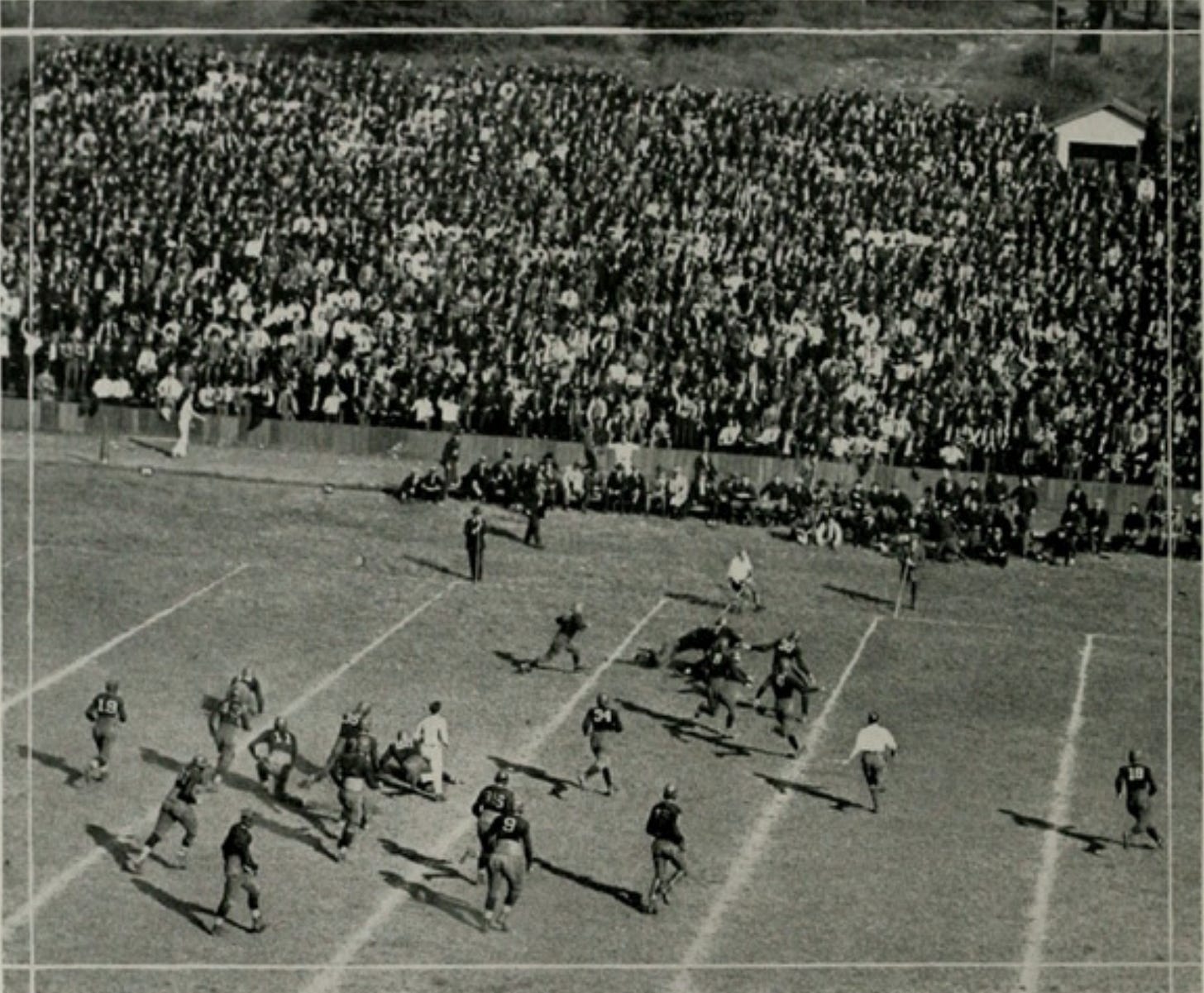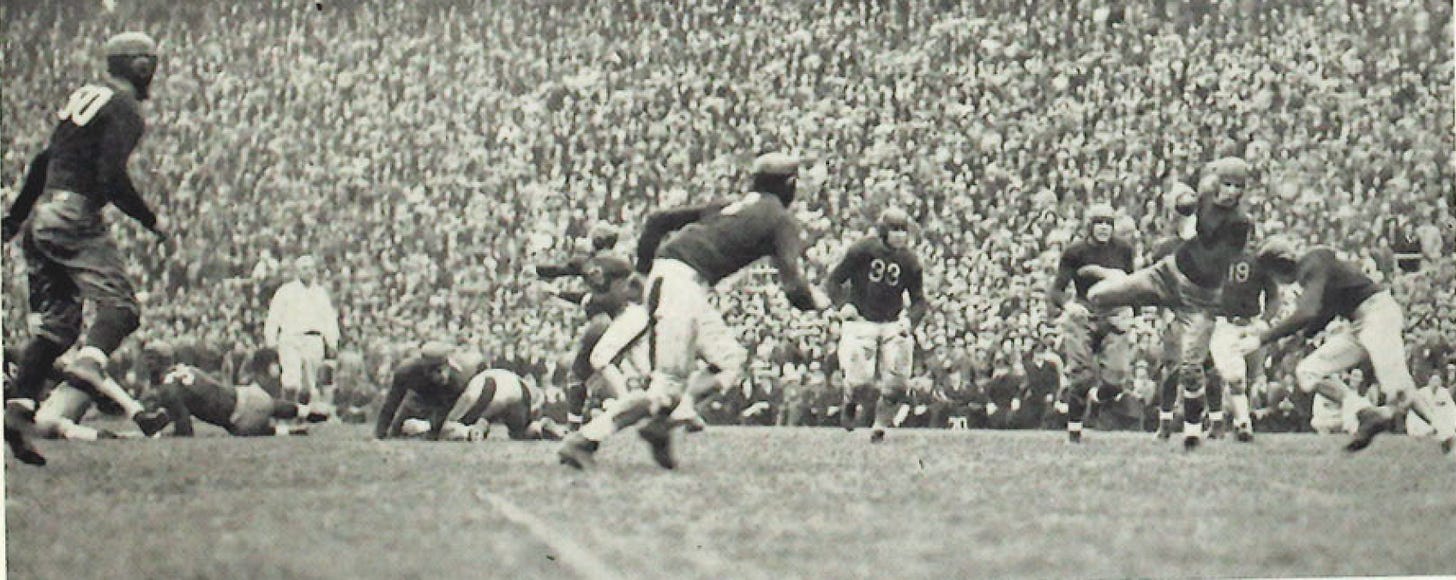Terminology... Hail Mary Pass
This is article #7 in a series covering the origins of football’s terminology. All are available under the Terminology tab above. My book, Hut! Hut! Hike! describes the emergence of more than 400 football terms.
Among the more colorful terms for a pass play is the Hail Mary, which now describes a long, last-minute pass thrown by teams trailing on the scoreboard. But it was not always so, and if you believe the story, the original Hail Mary was not a pass play.
The legend of the Hail Mary play began in 1932 when one of Notre Dame’s Four Horsemen, Jim Crowley, spoke at the American Football Coaches Association banquet. Crowley told the crowd of Notre Dame’s come-from-behind victory over Georgia Tech in 1922. Georgia Tech twice fumbled deep, and when Notre Dame failed to move the ball, a lineman, who happened to be Presbyterian, suggested the team say a Hail Mary in the huddle before the fourth-down play. Notre Dame scored on a running play, and a legend was born. Of course, the legend may be only a legend since there was no public mention of the Hail Mary incident until Crowley's speech almost ten years later.

The Hail Mary resurfaced in 1935 when Irish quarterback, William Shakespeare, threw long desperation passes to beat Ohio State and tie Army. It also popped up during the lead-up to Georgetown, another Catholic school, playing Mississippi State in the 1940 Orange Bowl.

The Hail Mary pass left the surly bonds of its Catholic origins in the late 1950s and early 1960s, being mentioned in isolated instances from coast-to-coast. It exploded on the football scene following Navy’s 1963 victory over Michigan, when Heisman Trophy-winning quarterback Roger Staubach described his last-minute pass as a “Hail Mary” in his post-game comments.
Since then, the term has described many throws, most famously by another Heisman winner, Doug Flutie, whose scrambling last-second bomb to beat Miami in 1984 cemented the Hail Mary in football consciousness.
Football Archaeology is reader-supported. Click here to buy one of my books or otherwise support the site.

